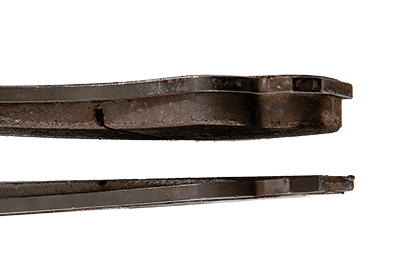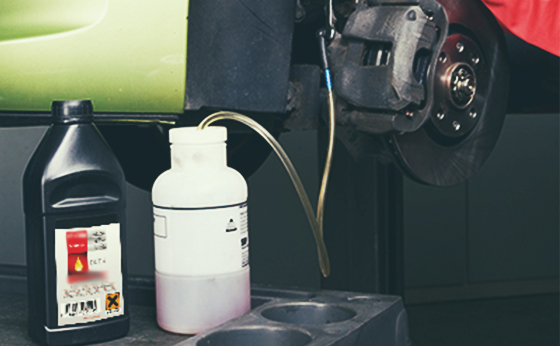While you’re driving, a dashboard warning light may illuminate or flash in an alarming red colour (depending on the vehicle model), to indicate a problem with the braking system.
Drivers sometimes ask whether it’s safe to drive with this brake light on. The answer is no; it should never be ignored. Brake system warning lights show that there is immediate risk and potentially a problem that compromises driver and vehicle safety.
So, why does the light glow? There are several reasons it may light up, but many drivers can’t identify their warning lights or recognise the risks involved.
Brake system and ABS warning lights
The brake system light looks something like this:

An ABS (anti-lock braking system) light looks like this:
(also called anti-skid braking system)

Common causes of a flashing brake system warning light
Brake fluid level is too low
RISK: This will increase the risk of ‘vapour lock’.
What to do: You can read our article on brake efficiency problems - including vapour lock.
Brake pad thickness is under the minimum

RISK: A thin and worn brake pad can lead to the underlayer coming into contact with the brake discs and eventually – in the worst-case scenario – to the back plate coming into contact with the brake disc.
What to do: Check the brake pad thickness and replace any pads if necessary.
False alarm due to a problem in a brake system part
(e.g. ABS)
RISK: A broken, worn or damaged ABS ring may generate a false signal from the drive shaft or wheel bearing. In case of corrosion under the sensor mounting points, the sensor may be forced closer to the ABS ring and give an incorrect reading to the ABS module.
What to do: Check the complete ABS system for corrosion or broken rings and replace where needed.
False alarm caused by an oversensitive brake warning system
RISK: The dashboard brake system warning light keeps flashing, even after replacing the pads and related wear sensors.
What to do:
- Push the brake pedal a few times to ensure contact between the brake pads and discs.
- Switch the dashboard off for a few seconds.
- Turn the dashboard back on again and see if the light still remains. If the brake warning light is still illuminated, then seek assistance and advice.
This type of false alarm is common on certain types of car makes and models.
The content contained in this article is for entertainment and informational purposes only and should not be used in lieu of seeking professional advice from a certified technician or mechanic. We encourage you to consult with a certified technician or mechanic if you have specific questions or concerns relating to any of the topics covered herein. Under no circumstances will we be liable for any loss or damage caused by your reliance on any content.


